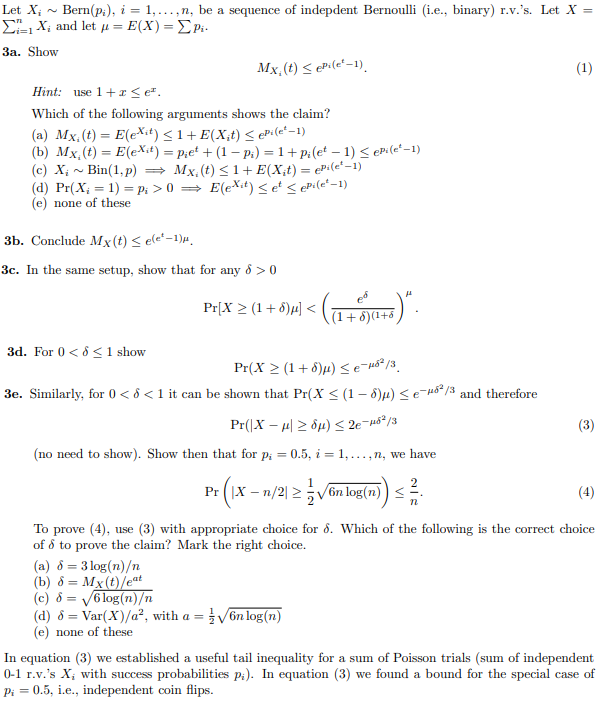Answered step by step
Verified Expert Solution
Question
1 Approved Answer
Let X, Bern(pi), i Xi and let 3a. Show Hint: use I + e-r. , n, be a sequence of indepdent Bernoulli (i.e., binary)

Let X, Bern(pi), i Xi and let 3a. Show Hint: use I + e-r. , n, be a sequence of indepdent Bernoulli (i.e., binary) r.v.'s. Let X Which of the following arguments shows the claim? (a) Mx, (t) 1+ E(Xit) (b) (t) E(eXif) pie* + (I pi) I + pi(et (c) 1+ E(Xit) (d) Pr(Xi I) E(eXit) Set (e) none of these 3b. Conclude Mx (t) 3c. In the same setup, show that for any 6 > O Pr[x (1 +6)// < ad. For O < I show Pr(x (1 + 3e. Similarly, for O < 6 < I it can be shown that Pr(X (I and therefore Pr(lx 2e-g,52/3 (no need to show). Show then that for pi 0.5, i I, . n, we have Pr IX 6n log(n) To prove use (3) with appropriate choice for 6. Which of the following is the correct choice of 6 to prove the claim? Mark the right choice. (b) = Mx t eat (d) with a (e) none of these In equation (3) we established a useful tail inequality for a sum of Poisson trials (sum of independent 0-1 r.v.'s Xi with success probabilities pi). In equation (3) we found a for the special case of pi 0.5, i.e., independent coin flips.
Step by Step Solution
There are 3 Steps involved in it
Step: 1

Get Instant Access to Expert-Tailored Solutions
See step-by-step solutions with expert insights and AI powered tools for academic success
Step: 2

Step: 3

Ace Your Homework with AI
Get the answers you need in no time with our AI-driven, step-by-step assistance
Get Started


